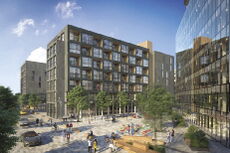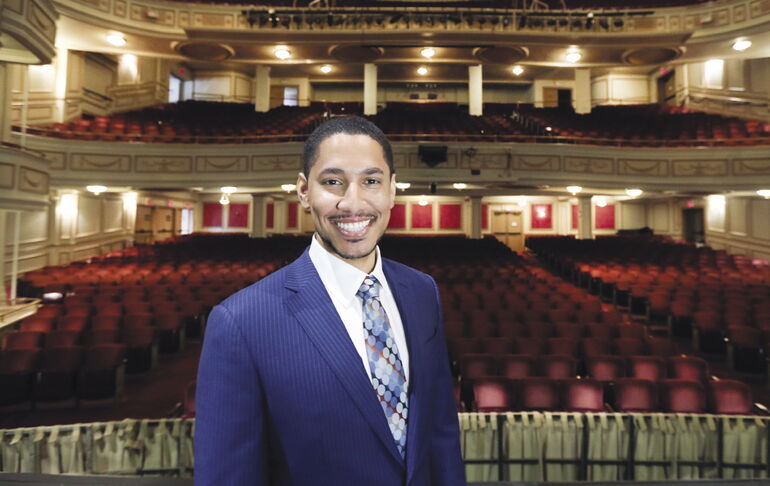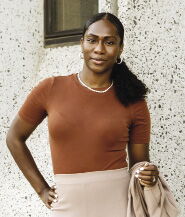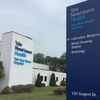
Processing Your Payment
Please do not leave this page until complete. This can take a few moments.
-
News
-
Editions
-
- Lists
-
Viewpoints
-
HBJ Events
-
Event Info
- 2024 Economic Outlook Webinar Presented by: NBT Bank
- Best Places to Work in Connecticut 2024
- Top 25 Women In Business Awards 2024
- Connecticut's Family Business Awards 2024
- What's Your Story? A Small Business Giveaway 2024 Presented By: Torrington Savings Bank
- 40 Under Forty Awards 2024
- C-Suite and Lifetime Achievement Awards 2024
- Connecticut's Health Care Heroes Awards 2024
-
-
Business Calendar
-
Custom Content
- News
-
Editions
View Digital Editions
Biweekly Issues
- April 29, 2024
- April 15, 2024
- April 1, 2024
- March 18, 2024
- March 4, 2024
- February 19, 2024
- February 5, 2024
- January 22, 2024
- January 8, 2024
- + More
Special Editions
- Lists
- Viewpoints
-
HBJ Events
Event Info
- View all Events
- 2024 Economic Outlook Webinar Presented by: NBT Bank
- Best Places to Work in Connecticut 2024
- Top 25 Women In Business Awards 2024
- Connecticut's Family Business Awards 2024
- What's Your Story? A Small Business Giveaway 2024 Presented By: Torrington Savings Bank
- 40 Under Forty Awards 2024
- C-Suite and Lifetime Achievement Awards 2024
- Connecticut's Health Care Heroes Awards 2024
Award Honorees
- Business Calendar
- Custom Content
Surge in new Elm City residents could be big plus for arts groups
 PHOTO | CONTRIBUTED
Anthony McDonald, executive director of the Shubert Theatre.
PHOTO | CONTRIBUTED
Anthony McDonald, executive director of the Shubert Theatre.
Could the wave of new housing developments in downtown New Haven be a potential bonanza for arts groups?
Leaders at some New Haven cultural institutions certainly hope so, but it isn't clear yet how they as a group — or as individual organizations — will be wooing these thousands of new residents, many of whom fall into the prime demographic as potential arts goers, subscribers and donors.
New Haven has added about 2,334 mostly market-rate apartments over the decade in the downtown area, said Steve Fontana, the city's deputy director of economic development.
There's also the more than 1,200 units currently in active construction, such as the development on the site of the former New Haven Coliseum, bringing the total to more than 3,500 units.
Add to that the more than 2,073 units built by the City’s Livable City Initiative and the 1,114 additional units currently in that pipeline, then the wave of new locals looks more like a tsunami.
There is no hard data on how new housing units will translate into the number of new people, says Fontana, but anecdotally speaking, experts estimate around 1.7 persons per residence.
All told, the thousands of new residents are a potential windfall for not-for-profit arts groups. Many of them were struggling before the pandemic closings in 2020 — and still are after. For many theaters, museums, and music and visual arts groups, audiences have yet to return to pre-pandemic levels, with some reporting only 60% or less return of audiences from 2019 levels.
"What I imagine will happen is that this influx of people who are looking for entertainment within walking distance will help speed up the return of the numbers that we saw pre-pandemic," says Shelley Quiala, executive director of New Haven's annual International Festival of Arts & Ideas.
Adriane Jefferson, director of cultural affairs for the city's Arts, Culture and Tourism Department, is buoyed by this audience potential.

"Every time you have expansion of residents, there's increased foot traffic and you increase the economic opportunity arts and cultural organizations can cultivate," she said. "The arts in general are constantly looking for ways to expand their marketing footprint, and we have to be a little more creative in how we do those things. While we're heavy on the digital side, it's important to remember for those who are moving here not everyone is in that digital space."
But arts groups have yet to coalesce around unified or individual initiatives to specifically woo these potential patrons.
"I don't think there's been that conversation [among arts groups] but perhaps we can facilitate a conversation around that subject and see whether there is a demand for that," Jefferson said.
One of the challenges for arts groups is not just the will but also the way to tap into the new arrivals.
"We need to find pathways to those new folks," says Kit Ingui, managing director of Long Wharf Theatre, whose administrative offices are now housed at 70 Audubon St. "But we are also mindful about our resources."
The pursuit of these new residents, either as an individual institution or collectively, must also be balanced with its priorities as groups still find themselves downsized from the pandemic cuts, she said.
But the potential is great, many say.
"There are definitely a lot of things we can do," said Anthony McDonald, executive director of the Shubert Theatre. "But oftentimes it takes manpower and we're short-staffed. But it's the kind of work that, if done right, can definitely bear some fruit because these people are ripe for being new patrons."
Sometimes marketing for these new arrivals takes a back-to-the basics approach.
"There is a lot of room for connecting with the [buildings' management] to figure out how we can offer private deals to their residents," said McDonald, "or inviting them for a mixer at the theater and just opening our doors and showing the people who we are and what the building looks like."

For an arts community, it's basic marketing through one-on-one relationships, according to Jefferson.
"Sometimes going back to things like sending brochures, mailing hard copies, door knocking, canvassing and simply welcoming people to the neighborhood," she said. "To me, that's more intimate and more personal than what you can do in the digital space."
Will the net result from the influx of new downtown residents downtown — and any initiatives the arts community undertakes — be a "game changer?"
"That's yet to be seen," said Quiala, who suggests a wider engagement strategy.
If there are conversations about a systemic approach to connect with the new residents, says Quiala, arts organizations should be intentional about not leaving any neighborhood or group of people out of plans.
"As this surge happens downtown we have to remember there are amazing things happening in Newhallville, The Hill, and in the Dixwell Avenue, Fairhaven and Westville communities," she said.
Ingui agrees. "When we build relations with new folks, we have to be mindful to be sure that we are still centering the relationships that we are trying to develop with folks who have always lived in New Haven."

2022 Giving Guide
This special edition informs and connects businesses with nonprofit organizations that are aligned with what they care about. Each nonprofit profile provides a crisp snapshot of the organization’s mission, goals, area of service, giving and volunteer opportunities and board leadership.
Learn more
Subscribe
Hartford Business Journal provides the top coverage of news, trends, data, politics and personalities of the area’s business community. Get the news and information you need from the award-winning writers at HBJ. Don’t miss out - subscribe today.
Subscribe
2024 Book of Lists
Delivering Vital Marketplace Content and Context to Senior Decision Makers Throughout Greater Hartford and the State ... All Year Long!
Read Here-
2022 Giving Guide
This special edition informs and connects businesses with nonprofit organizations that are aligned with what they care about. Each nonprofit profile provides a crisp snapshot of the organization’s mission, goals, area of service, giving and volunteer opportunities and board leadership.
-
Subscribe
Hartford Business Journal provides the top coverage of news, trends, data, politics and personalities of the area’s business community. Get the news and information you need from the award-winning writers at HBJ. Don’t miss out - subscribe today.
-
2024 Book of Lists
Delivering Vital Marketplace Content and Context to Senior Decision Makers Throughout Greater Hartford and the State ... All Year Long!
ABOUT
ADVERTISE
NEW ENGLAND BUSINESS MEDIA SITES
No articles left
Get access now
In order to use this feature, we need some information from you. You can also login or register for a free account.
By clicking submit you are agreeing to our cookie usage and Privacy Policy
Already have an account? Login
Already have an account? Login
Want to create an account? Register
Get access now
In order to use this feature, we need some information from you. You can also login or register for a free account.
By clicking submit you are agreeing to our cookie usage and Privacy Policy
Already have an account? Login
Already have an account? Login
Want to create an account? Register






0 Comments